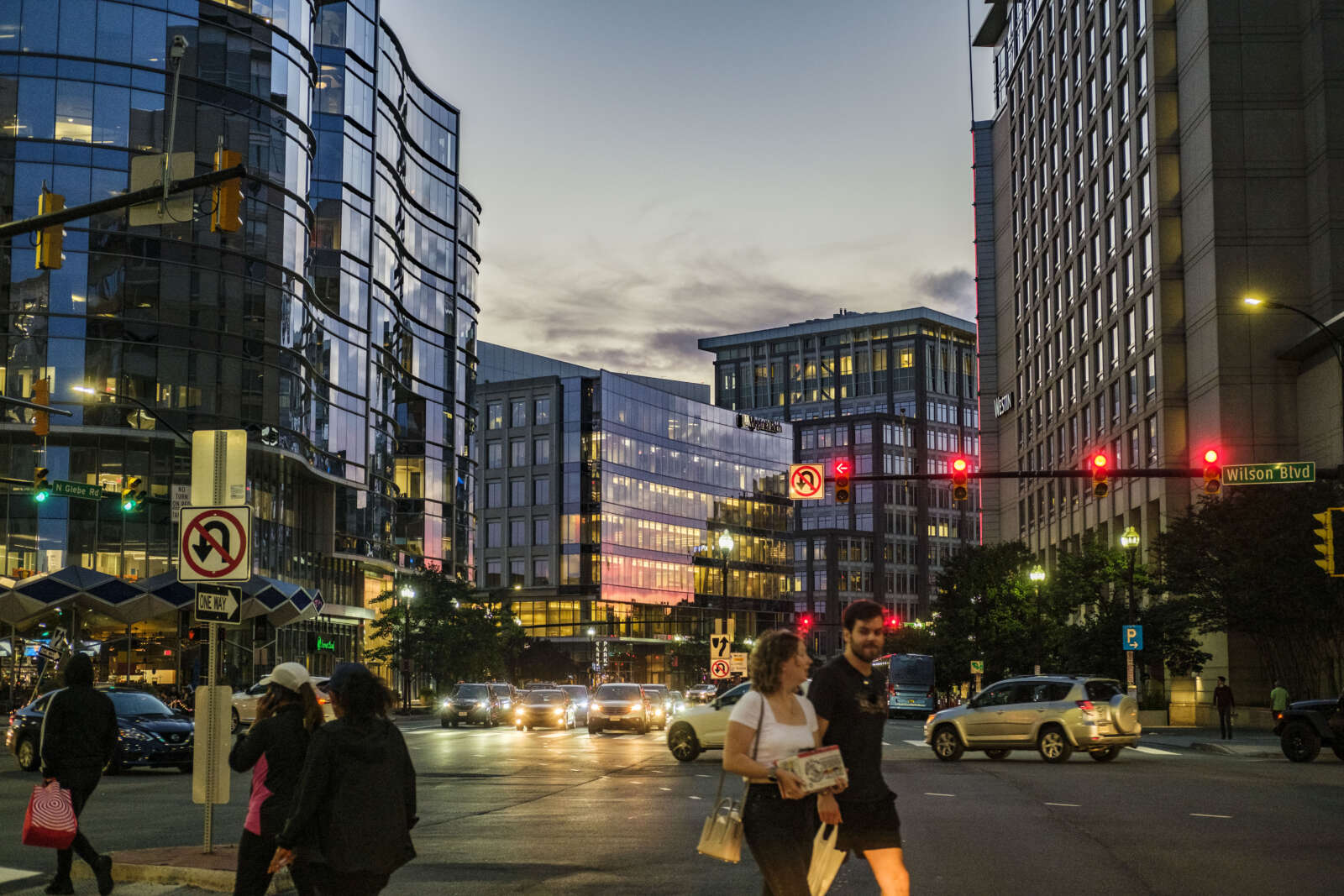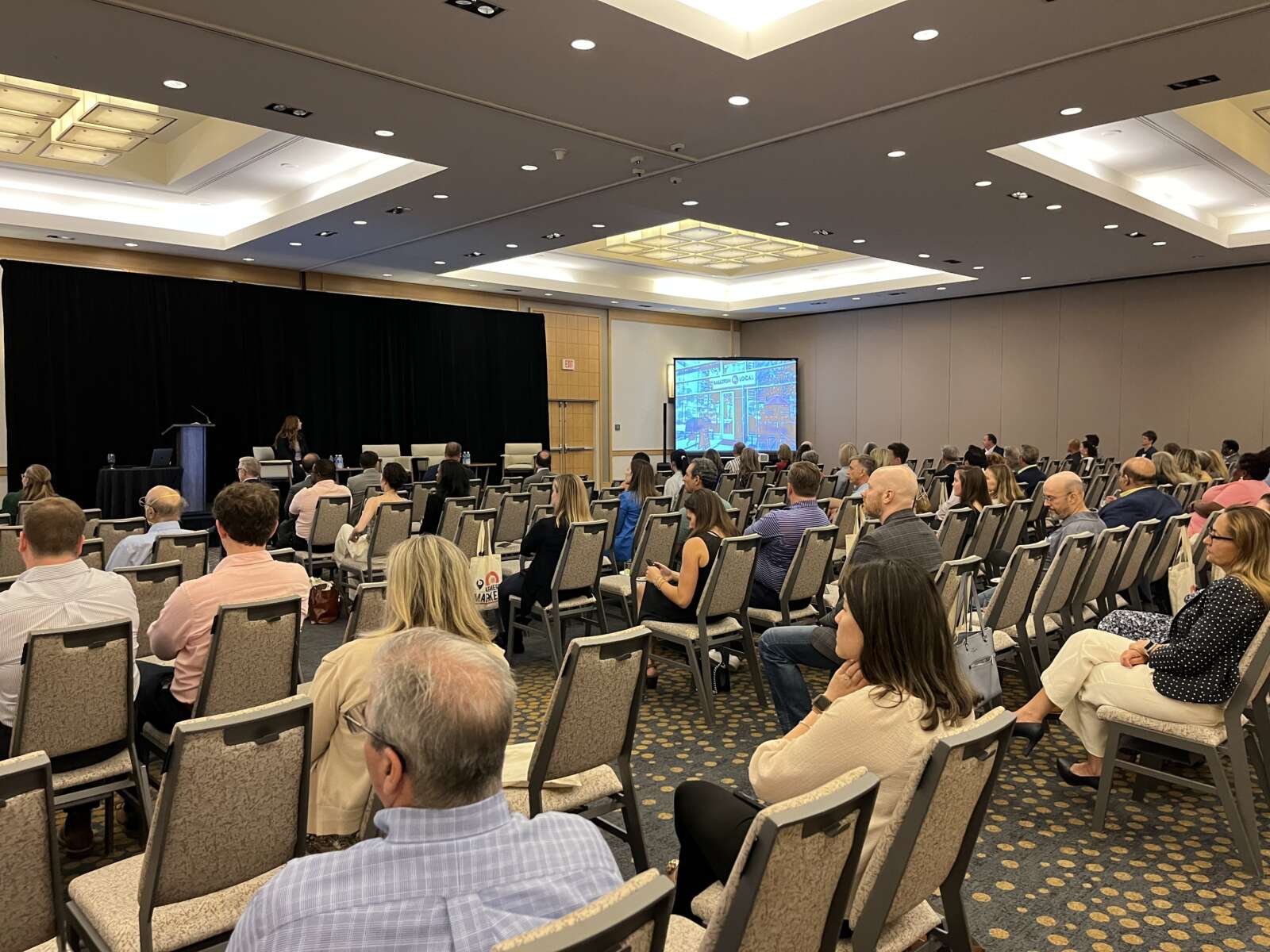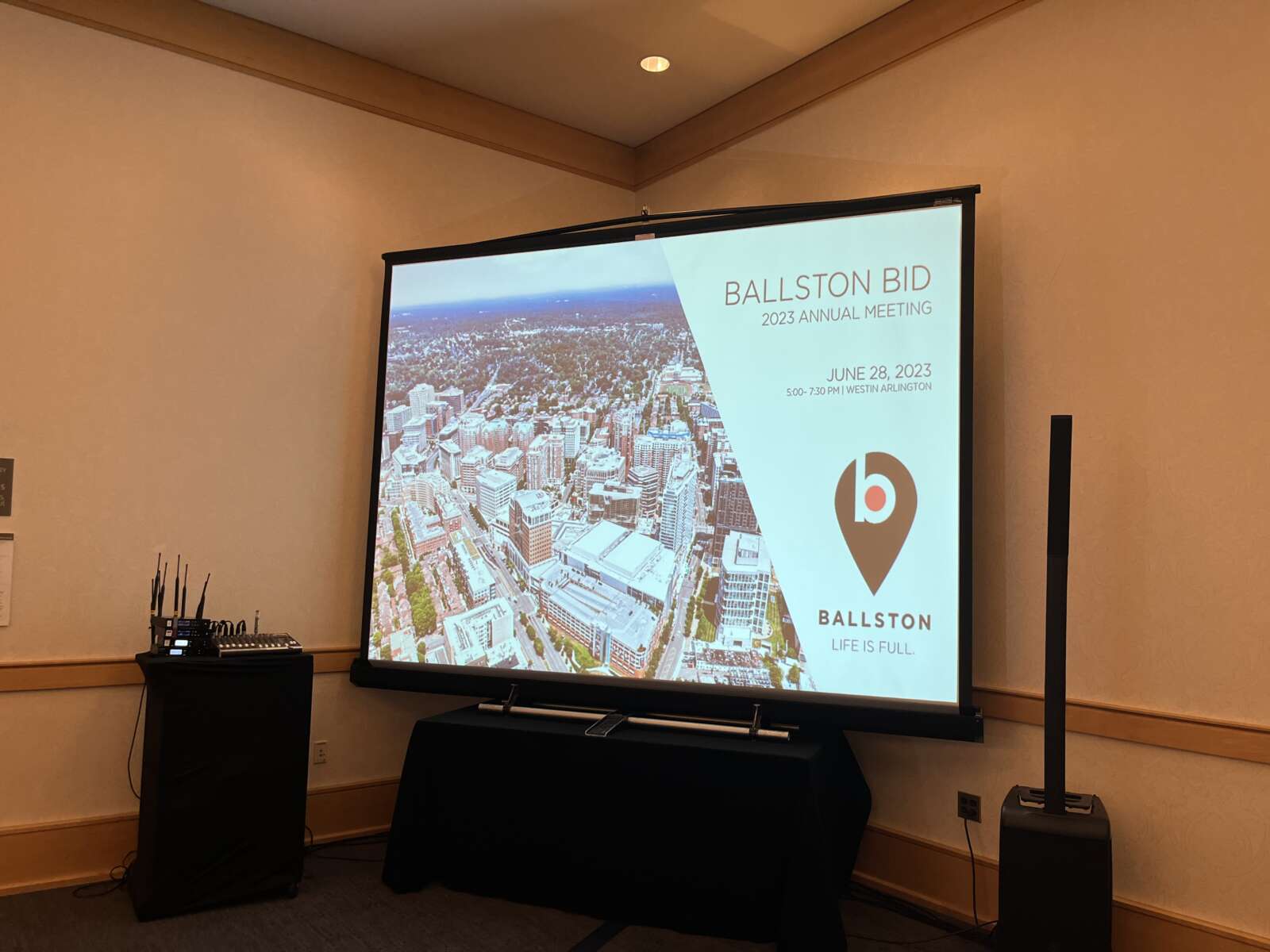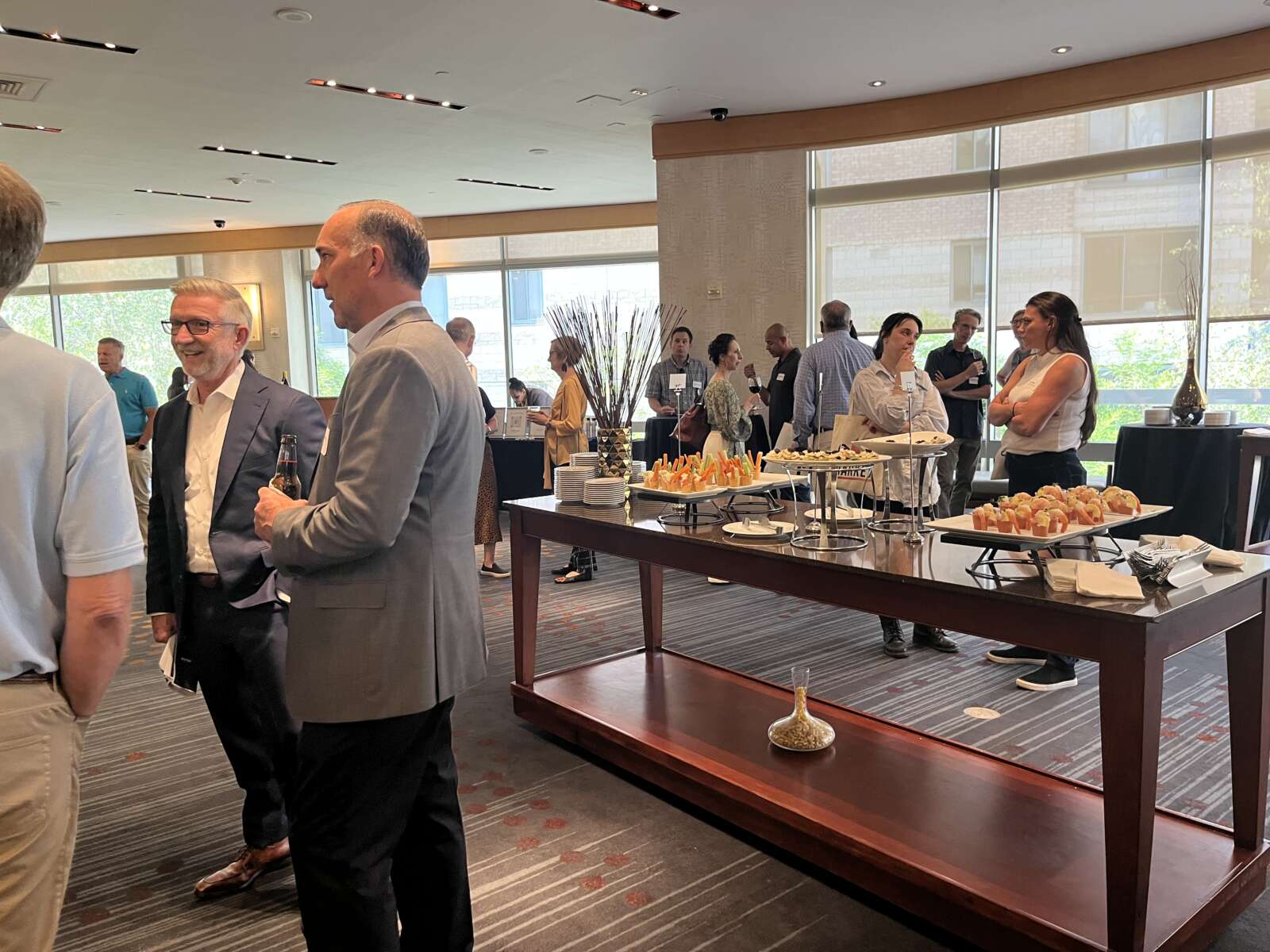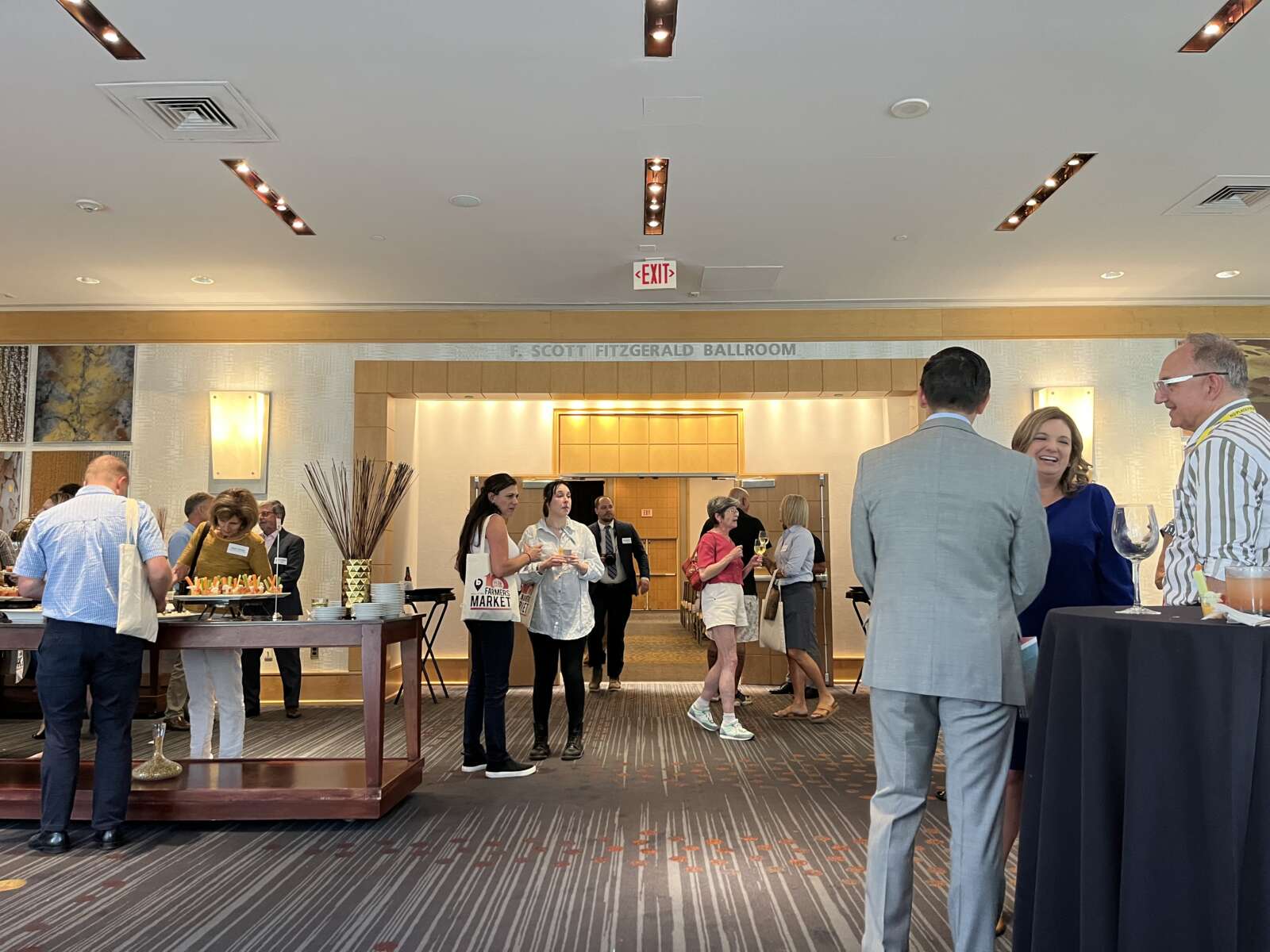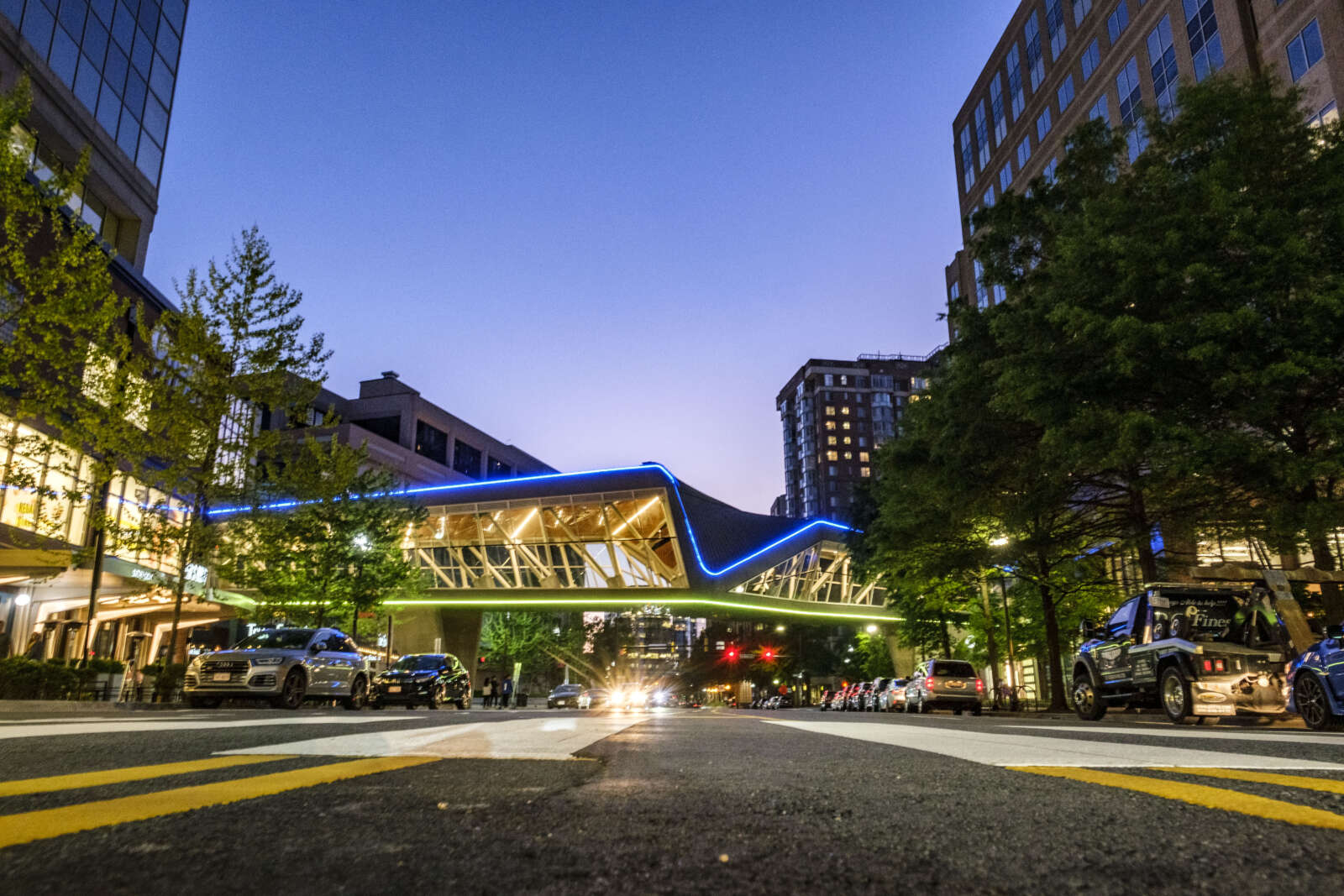(Updated at 6:20 p.m.) Post-pandemic, the Ballston Business Improvement District says it will do what it takes to entice remote workers back to the office and attract new residents.
Like other business districts across the country, Ballston has had to weather a slow return-to-work environment as well as permanent changes to where, and how, people work. Compared to peer districts, like downtown D.C., the BID says Ballston was buoyed by a influx of young, highly educated and high-earning residents, who choose to live there for its walkability and transit access.
“Ballston continued to grow throughout the pandemic, and we’re still growing,” BID CEO Tina Leone said last Wednesday during the organization’s annual meeting. “New businesses, new developments and more residents have been joining our community.”
The pandemic drove up the office vacancy rate in Ballston to 24% earlier this year, as some employers abandon offices entirely. For other companies signing leases, demand increased for newer office buildings with a host of perks for workers.
Today, there are 942 total businesses in the neighborhood, including 114 retailers, according to the BID. Some 20,000 employees work in Ballston and about 15,000 people call it home, for a 1.4-to-1 employee-resident ratio.
While lauding its success, the BID is charting its course out of the pandemic and the financial uncertainty it caused. Its leaders say they are focused on helping businesses reconnect with their employees, facilitating renovations to aging office buildings and creating a neighborhood where people want to live.
“We want to understand what our employers want and then more importantly what their employees want. We expect to attract both parties to our market and keep them here,” Board President Simon Carney said. “To do this we need to listen, understand and execute in an ordinated manner. We must be looking at the long term.”
One way the BID supports local businesses, Leone says, is through its Ballston Business Appreciation Campaign, which allows workers to attend free in-office events. It is also open to apartment buildings. Interested employers and apartment management companies need only to fill out a general form online.
“Our business appreciation campaign has helped businesses re-engage with their employees through custom events like breakfasts, lunches, a unique happy hour, wellness events or trivia,” Leone said. “We’ll do whatever they need to come back.”
Meanwhile, Arlington Economic Development Director Ryan Touhill emphasized the role of renovation work to existing, vacant office buildings to attract new tenants. Recent examples of this include the Ballston Point building (4300 Wilson Blvd), which netted new occupants, and Three Ballston Plaza (1100 N. Glebe Road), where work is underway.
Touhill says the BID can help more office building owners take on similar improvements.
“We want to speed up the process to reposition, redevelop and convert our older, more obsolete office buildings because when our businesses succeed, our community succeeds,” Touhill said. “Economic development is an investment in economic prosperity. When we grow our businesses and when they invest in our county, they create jobs and provide opportunities for workers and generate the tax revenue that funds our schools and the county services we have here.”
During her remarks, Leone celebrated the development activity happening in Ballston that goes beyond office buildings. This includes some 2,000 apartment units and 100,000 square feet of retail space will be coming to the area via the forthcoming Harris Teeter redevelopment project and planned redevelopment of the Macy’s nearby.
“We are the superior choice for living, compared to downtown D.C. in particular. We have more residential options, more amenities and just in Ballston alone we have over 80 restaurants,” Leone said. “Ballston has plenty of parks and green spaces, transportation options and for those of us who workout, there are 17 gyms.”
Touhill says the BID is focused on making Ballston an appealing place for everyone.
“The work that the BID is doing every day to create a community in Ballston is what helps us create a true sense of place and community that will attract workers, residents, visitors and businesses to our business districts,” he said.


